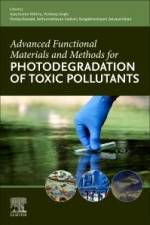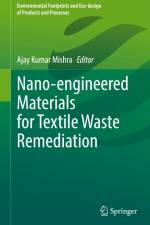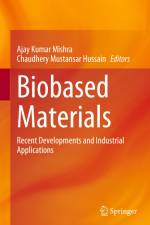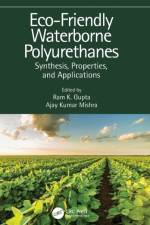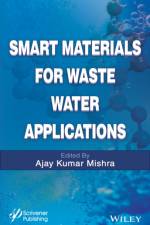Bøger af Ajay Kumar Mishra
-
208,95 kr. ¿¿¿¿¿¿¿ ¿¿ ¿¿¿¿ ¿¿¿¿ ¿¿¿¿ ¿¿¿¿¿ ¿¿¿¿ ¿¿ ¿¿¿¿¿¿¿¿¿ ¿¿ ¿¿ ¿¿ ¿¿ ¿¿¿¿¿¿ ¿¿¿ ¿¿¿¿ ¿¿¿¿ ¿¿¿¿¿ ¿¿ ¿¿ ¿¿ ¿¿¿¿ ¿¿, ¿¿ ¿¿¿¿ ¿¿¿¿ ¿¿¿¿¿ ¿¿¿ ¿¿¿¿ ¿¿ ¿¿¿¿ ¿¿ ¿¿ ¿¿ ¿¿¿¿¿¿¿ ¿¿¿ ¿¿¿¿¿¿¿ ¿¿ ¿¿¿¿¿¿¿¿ ¿¿¿¿¿¿¿ ¿¿ ¿¿¿¿ ¿¿¿¿ ¿¿¿ ¿¿¿¿ ¿¿¿¿ ¿¿¿ ¿¿¿¿¿¿¿ ¿¿ ¿¿¿¿¿¿¿¿¿¿ ¿¿ ¿¿¿¿¿¿ ¿¿¿¿¿¿ ¿¿¿ ¿¿¿¿ ¿¿¿¿¿¿¿¿ ¿¿¿¿¿¿ ¿¿¿¿¿¿ ¿¿ ¿¿¿¿¿¿¿¿ ¿¿¿¿¿¿¿¿ ¿¿¿¿¿¿¿¿¿¿ ¿¿¿¿ ¿¿ ¿¿¿¿¿ ¿¿¿ ¿¿¿¿¿ ¿¿ ¿¿¿¿¿ ¿¿¿ ¿¿¿¿¿¿ ¿¿ ¿¿ ¿¿¿¿¿¿ ¿¿¿ ¿¿ ¿¿¿¿¿¿ ¿¿¿ ¿¿¿¿¿ ¿¿¿¿ ¿¿ ¿¿¿ ¿¿¿ ¿¿¿ ¿¿¿ ¿¿¿¿ ¿¿¿ ¿¿¿¿¿ ¿¿ ¿¿¿¿¿ ¿¿¿¿, ¿¿¿¿ ¿¿¿¿¿ ¿¿ ¿¿¿¿, ¿¿¿¿¿ ¿¿¿¿¿¿ ¿¿¿ ¿¿¿¿ ¿¿ ¿¿¿¿, ¿¿¿¿¿¿¿¿¿¿, ¿¿¿-¿¿¿¿¿, ¿¿¿¿ ¿¿¿¿¿ ¿¿ ¿¿ ¿¿ ¿¿¿¿ ¿¿¿¿¿ ¿¿¿ ¿¿¿ ¿¿¿¿¿¿¿¿¿ ¿¿¿¿¿¿¿ ¿¿¿¿¿¿ ¿¿ ¿¿¿¿¿ ¿¿¿¿¿ ¿¿ ¿¿¿¿¿¿ ¿¿ ¿¿. ¿¿¿¿ ¿¿ ¿¿¿¿¿¿¿¿¿ ¿¿ ¿¿¿¿¿¿¿ ¿¿¿¿¿¿ ¿¿ ¿¿¿ ¿¿¿¿¿¿¿¿¿ ¿¿¿¿¿-¿¿¿¿¿¿¿¿ ¿¿¿ ¿¿¿¿¿¿ ¿¿¿¿ ¿¿¿¿-¿¿¿¿¿¿¿ ¿¿ ¿¿¿¿ ¿¿¿¿¿¿ ¿¿¿¿ ¿¿ ¿¿¿¿¿¿¿¿¿ ¿¿¿¿¿¿ ¿¿ ¿¿¿¿¿¿¿¿ ¿¿¿¿¿¿¿ ¿¿ ¿¿¿ ¿¿¿¿¿¿ ¿¿¿¿¿¿ ¿¿ ¿¿¿¿¿ ¿¿ ¿¿¿ ¿¿¿¿¿¿¿ ¿¿¿ ¿¿¿¿ ¿¿¿¿ ¿¿ ¿¿¿¿ ¿¿ ¿¿¿¿ ¿¿¿¿ ¿¿ ¿¿ '¿¿¿¿ ¿¿¿¿¿¿ ¿¿¿¿¿ ¿¿¿¿¿ ¿¿-¿¿¿ ¿¿¿¿¿ ¿¿¿¿¿ ¿¿¿¿¿¿ ¿¿¿¿¿¿¿ ¿¿¿¿¿¿¿¿ ¿¿¿¿¿¿¿¿ ¿¿ ¿¿¿¿ ¿¿¿¿ ¿¿¿ ¿¿ ¿¿¿¿¿¿ ¿¿¿ ¿¿ ¿¿¿¿¿¿¿¿¿¿ ¿¿ ¿¿¿ ¿¿¿¿¿¿¿¿ ¿¿¿¿¿ ¿¿ ¿¿¿¿¿¿¿ ¿¿ ¿¿¿¿¿ ¿¿¿¿¿¿ ¿¿¿ ¿¿¿¿¿¿¿¿¿¿¿¿ ¿¿¿ ¿¿¿¿¿¿¿ ¿¿¿¿¿¿¿¿¿¿ ¿¿¿ ¿¿¿¿¿¿¿ ¿¿¿ ¿¿¿¿¿¿¿¿ ¿¿¿¿¿¿¿ ¿¿¿ ¿¿¿¿ ¿¿¿¿ ¿¿ ¿¿¿¿¿ ¿¿¿¿¿ ¿¿, ¿¿ ¿¿¿ ¿¿¿ ¿¿ ¿¿¿ ¿¿¿¿ ¿¿¿¿¿ ¿¿ ¿¿¿¿¿¿ ¿¿ ¿¿ ¿¿¿¿ ¿¿ ¿¿¿¿¿¿ ¿¿¿
- Bog
- 208,95 kr.
-
2.676,95 kr. Advanced Functional Materials and Methods for Photodegradation of Toxic Pollutants addresses the potential role of visible active photocatalytic methods for the removal of various emerging and persistent organic pollutants (POPs.) Describing the classification, sources and potential risks of emerging organics in water bodies and the environment, the book covers the different synthesis methods of visible active structured photocatalysts and structure related properties to their applications in photocatalytic processes for the removal of antibiotics, pharma and heavy metal pollutants. This book provides an invaluable reference to academics, researchers and technicians in chemical engineering, chemistry and environmental science. In addition, the mechanistic insights associated with the interaction of advanced functional materials and water pollutants along with the possible reaction pathway occurring during the visible light induced photocatalytic processes together with toxicity are discussed in detail along with the reutilization of catalysts, supporting the inherent reaction conditions performed with natural conditions.
- Bog
- 2.676,95 kr.
-
- Bog
- 1.539,95 kr.
-
988,95 kr. This book discusses the extraction, purification, modification, and processing of biobased materials and their various industrial applications, across biomedical, pharmaceutical, construction, and other industries. It includes contributions from experts on hybrid biopolymers and bio-composites, bioactive and biodegradable materials, bio-inert polymers, natural polymers and composites, and metallic natural materials. Therefore, this encyclopedia is a useful reference for scientists, academicians, research scholars, and technologists. Major challenges of biobased materials are their efficient development, cost-effective, and green & environment friendly production/applications. This encyclopedia answers these challenges to professionals and scientists for proper utilization of biobased materials. It presents the recent practices of biobased materials technology in different scientific and engineering domains. It helps the bounded industrial outcomes to reach the general readership of different domains. This encyclopedia bridges the technological gaps between the industrial and academic professionals and the novice young students/scholars. The interdisciplinarity of this encyclopedia makes it unique for a wide readership. The topic of biobased materials is currently popular in the scientific community, working in such following areas as Recycled materials, Renewable materials, Materials for efficiency, Materials for waste treatment, Materials for reduction of environmental load, Materials for easy disposal or recycle, Hazardous free materials, Materials for reducing human health impact, Materials for energy efficiency, Materials for green energy, etc. This is a relatively hot topic in materials science and has strong demands for energy, material and money savings, as well as heavy contamination problems, despite that the area of biobased materials belongs to most important fields of modern science & technology, no important encyclopedias have been published in the area of "e;biobased materials"e;
- Bog
- 988,95 kr.
-
- Synthesis, Properties, and Applications
1.833,95 kr. Waterborne polyurethanes (WPUs) offer an opportunity to use sustainable raw materials to produce environmentally sustainable polymers, particularly, polyols derived from vegetable oils. This book provides state-of-the-art knowledge of the synthesis, application, and property enhancement of WPUs.
- Bog
- 1.833,95 kr.
-
- Advances in Research and Applications
2.723,95 kr. Graphene oxide is a carbon-based material what produces a monolayer or a few layers of oxygen-functionalized graphene. The number of layers usually differentiate between graphene oxide and graphite oxide. Though a multilayer system, graphite oxide monolayer flakes and few-layer flakes can be found in a graphene oxide dispersion. Due to the presence of oxygen functionalities, graphene oxide can easily disperse in various organic solvents including water and is compatible with a different matrix that dramatically enhances electrical and mechanical properties when mixed with polymer and ceramic materials. Graphene oxide possesses a sp2 bonding network. Graphene oxide can be used as an intermediary in the production of single layer or few-layer graphene sheets. Graphene oxide can be reduced in solution and as a thin film using a variety of reducing conditions, and reduction converts the graphene oxide into a material that has a large enhancement in electrical conductivity. Graphene oxide has been used in a variety of applications not limited to materials science engineering and biotechnology. The present book describes the advances in research and applications of graphene oxide; in Chapter One, the general introduction on graphene oxide is introduced whereas in Chapter Two a broader summary of laser processing for graphene oxide/transition metal oxide nanocomposite coatings are described. Chapter Three discusses a graphene oxide template for the scaffolding transition metal/metal oxide ingredient. Chapter Four concludes the new advances in graphene oxide-metal nanocomposites for cancer theranostics. Chapter Five summarizes graphene oxide membranes as supercapacitor separators and Chapter Six contains details of graphene oxide in terms of the advances in research and applications of membranes. Chapter Seven speaks on the conductivity of graphene oxide films while Chapter Eight describes the application of graphene oxide based nanocomposites in heterogeneous photocatalysis for water purification. Chapter Nine deals with an immense uprising, detailing the functionalization and fine-tuning of 2D graphene designed for heterogeneous catalysis to make things greener. Chapter Ten summarizes graphene oxides for biomedical and therapeutic applications. Chapter Eleven describes graphene oxide as an outstanding material for advanced batteries while Chapter Twelve speaks on behalf of self-assembled graphene oxides and their different applications. Chapter Thirteen describes the versatile applications of graphene oxide in the field of nanoelectronic while Chapter Fourteen concludes this book with details about the design, fabrication, testing and delivery of graphene oxide in solar energy storage. This book will be highly beneficial to the researchers working in the area of graphene oxide, polymer/ceramic chemistry, materials science, engineering, drug delivery, medicine and environmental science. It also covers membrane and super capacitors with their advanced applications. This book also provides a platform for all researchers to carry out graphene oxide research and the advances in the area. The book also covers recent fundamentals, advancements and newer prospects about the future research in graphene oxides.
- Bog
- 2.723,95 kr.
-
1.987,95 kr. "Smart materials are used to develop more cost-effective and high-performance water treatment systems as well as instant and continuous ways to monitor water quality. Smart materials in water research have been extensively utilized for the treatment, remediation, and pollution prevention. Smart materials can maintain the long term water quality, availability and viability of water resource. Thus, water via smart materials can be reused, recycled, desalinized and also it can detect the biological and chemical contamination whether the source is from municipal, industrial or man-made waste. The 15 state-of-the-art review chapters contained in this book cover the recent advancements in the area of waste water, as well as the prospects about the future research and development of smart materials for the waste water applications in the municipal, industrial and manmade waste areas. Treatment techniques (nanofiltration, ultrafiltration, reverse osmosis, adsorption and nano-reactive membranes) are also covered in-depth. The chapters are divided into three groups: The first section includes the various carbon nanomaterials (such as carbon nanotubes, mixed oxides) with a focus on use of carbon at nanoscale applied for waste water research. The second section focuses on synthetic nanomaterials for pollutants removal. The third section highlights the bio-polymeric nanomaterials where the authors have used the natural polymers matrices in a composite and nanocomposite material for waste treatment"--
- Bog
- 1.987,95 kr.


